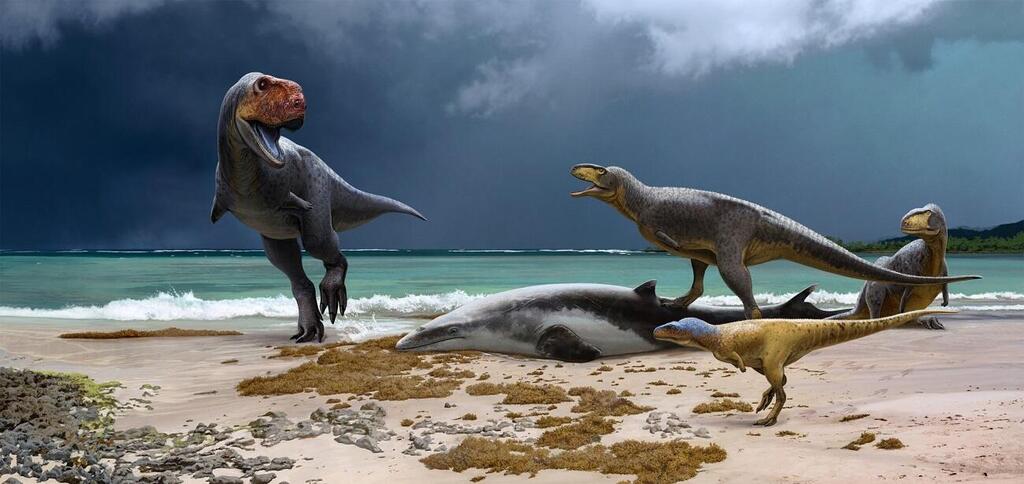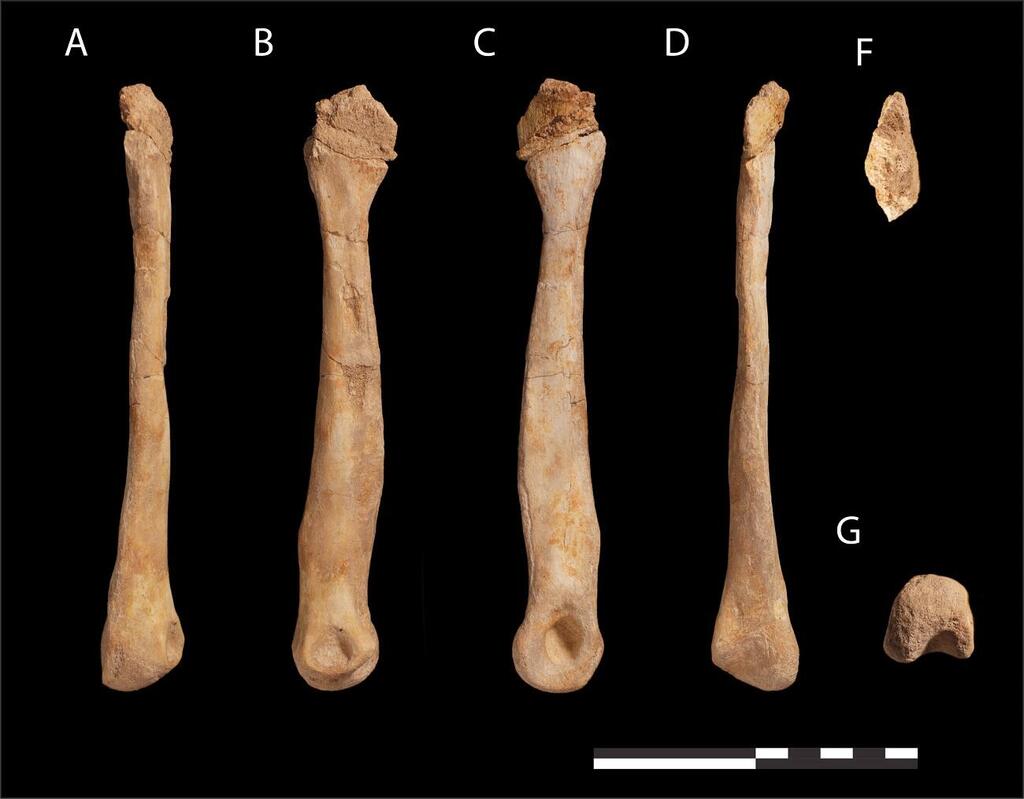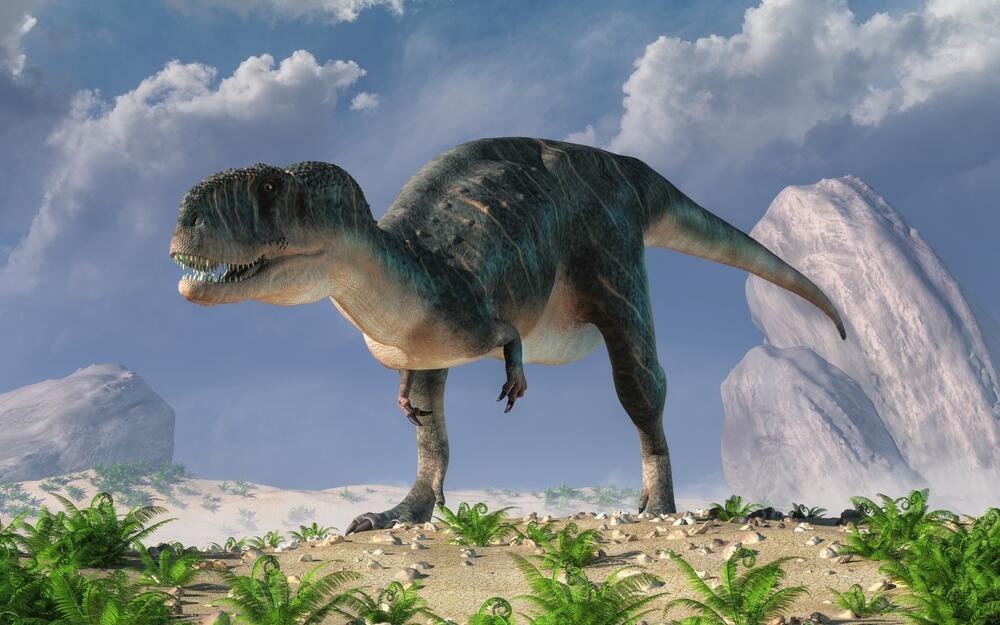Primitive relatives of the tyrannosaurus rex, with short arms relative to its body, horned heads, short tails and relatively small teeth, were discovered in Morocco. The two predatory dinosaur species, previously unknown, belong to the Abelisauridae family.
More stories:
Fossil analysis suggests that these dinosaurs lived at the end of the Cretaceous period, disappearing 66 million years ago, alongside most other dinosaurs.
3 View gallery


Reconstruction of the new dinosaurs discovered in Morocco
(Illustration: University of Bath)
These two new dinosaurs were found in the Ouled Abdoun Basin in Morocco. Researchers discovered one dinosaur's foot bone and the shinbone of the other dinosaur. These dinosaurs were part of the Abelisauridae family, which also included the Chenanisaurus barbaricus, another predatory dinosaur.
Therefore, researchers estimate that the region in which present-day Morocco is located was home to various dinosaur species just before a massive asteroid hit the Earth at the end of the Cretaceous period.
“What’s surprising here is that these are marine beds. It’s a shallow, tropical sea full of plesiosaurs, mosasaurs and sharks. It’s not exactly a place you’d expect to find a lot of dinosaurs. But we’re finding them,” said Dr. Nick Longrich, from the University of Bath’s Milner Centre for Evolution, who was the main author of the study published in the Cretaceous Research journal.
Although dinosaurs represent only a small portion of the fossils found in the region, these discoveries create the best picture of the existence of dinosaurs on the African continent before their end. It appears that dinosaurs were highly diverse in the region compared to other areas in the world during the same period.
So far, the study’s findings include five different dinosaur species: Ajnabia; a dinosaur from the Hadrosauridae family; a long-necked Titanosaur belonging to the group of giant sauropods that lived at the end of the Cretaceous period; a giant-sized Chenanisaurus that measured 7-8 meters in length; and the two new T-Rex relatives.
The last dinosaurs that roamed the Earth disappeared about 66 million years ago, along with up to 90% of all the species that lived during that time. However, the exact cause of this mass extinction, which marked the end of the Cretaceous period, has been debated for over 200 years.
One theory links it to the impact of a massive asteroid on the Yucatan Peninsula, although some argue that the dinosaurs were already experiencing a decline at that time. According to the new study’s authors, the dinosaurs found in Morocco suggest that they thrived in North Africa until the Cretaceous-Paleogene extinction event occurred.
“The end of the Cretaceous in western North America definitely seems to become less diverse at the end, but that’s just one small part of the world. It’s not clear that you can generalize from the dinosaurs of Wyoming and Montana to the whole world,” Longrich said. “It also grew colder near the end, so it might not be surprising if dinosaurs at higher latitudes became less diverse. But we don’t know much about dinosaurs from lower latitudes.”
Professor Nour-Eddine Jalil, from the University Cadi Ayyad in Morocco who co-authored the study, said: “When T. rex reigned as a megapredator in North America, abelisaurs sat at the top of the food chains in North Africa.”
“The dinosaur remains, despite their rarity, give the same messages as the more abundant marine reptile remains. They tell us that, just before the Cretaceous-Paleogene crisis, biodiversity was not declining but on the contrary, was diverse,” he added.



